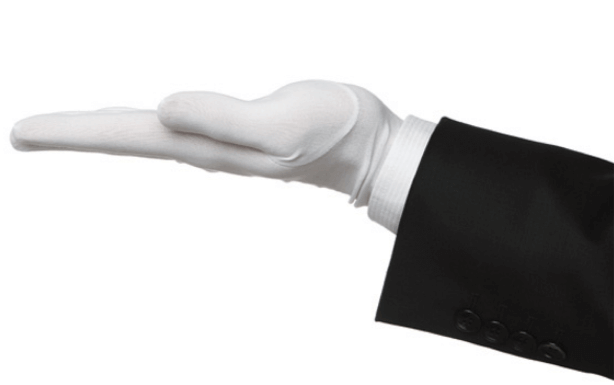Bookkeeping
What are reversing entries and why are they used?

Accrued expenses payable and prepaid expenses are reversing entries two accounts that can be affected by errors. Accrued expenses payable are expenses that have been incurred but not yet paid. If these accounts are not recorded correctly, it can lead to inaccurate financial statements. Reversing journal entries are recorded in financial statements to correct errors that were made in previous accounting periods.
What Does Reversing Entry Mean?

? Let’s say, you ordered raw materials from a supplier to make some HVAC Bookkeeping product that you want to sell. You receive the raw materials, but you still haven’t gotten the invoice by the end of an accounting period. On average, reversing entries occur on the first day of the new period, mirroring the original adjustments but with opposite values.
- Lets assume now that the business makes reversing entries at the start of month 2.
- The need to prepare reversing entries for prepaid expenses depend on which method you use in recording prepayments.
- Reversing entries simplify the process of making closing entries by automatically reversing any adjusting entries made in the previous period.
- Notice that the above reversing entry uses the same ledger accounts and amounts of the same adjusting entry that it aims to reverse.
- The general ledger is the central repository for financial data, including automatic reversing entries.
Trial Balance
Once the reversing entry is made, you can simply record the payment entry just like any other payment entry. However, they require careful attention to avoid errors, making it important to understand what is needed to reverse the process correctly. By using the complete reversal of entries method, we will get an idea about the errors in transactions and we will be able to pinpoint which unearned revenue transaction is wrong. Interest charged by the bank, $148, was entered in the debit side of the cash book and posted to the credit of the interest account.

Identify the Adjusting Entries to Reverse
This ensures that the financial statements accurately reflect the company’s financial position and performance for the new accounting period. Reversing journal entries are a useful tool for simplifying the accounting process and ensuring accurate financial statements. They are typically used for accruals and deferrals and are made at the beginning of an accounting period to reverse the effects of a previous adjusting entry. These reversing journal entries illustrate how businesses can efficiently manage accrued expenses and payroll.
- On December 1, 2022, one of your tenants promises to pay you at the end of February 2023 the equivalent of 3 months worth of rent covering December 2022 to February 2023.
- Accounting software is a type of accounting system that automates many of the accounting processes.
- This entry debits the expense account and credits the accrued expense account.
- On the first day of the new accounting period, create reversing entries that mirror the adjusting entries made at the end of the previous period, but with opposite values.
- If you fail to reverse the accrual entry it will recognize the expense twice when the paid invoice posts to the ledger as an expense.
- At the end of December, a company accrues $1,000 of interest expense for a loan that will be paid in January.
- He has been the CFO or controller of both small and medium sized companies and has run small businesses of his own.
This ensures balances are correctly reset and financial records remain accurate. Reversing entries are versatile accounting tools that can be applied in various situations to simplify financial records and ensure accuracy. Whether a business handles payroll, corrects errors, or adjusts revenue, reversing entry helps streamline processes and avoid complications in subsequent periods. Accountants create manual reversing journal entries to adjust or cancel previous transactions, especially those recorded incorrectly. These entries can be posted any time during the accounting period, offering flexibility.
As these entries are no longer required to be recorded as the business’s assets or liabilities, they are reversed at the period’s start. A reversing entry is a journal entry made in an accounting period, which reverses selected entries made in the immediately preceding period. The reversing entry typically occurs at the beginning of an accounting period. It is commonly used in situations when either revenue or expenses were accrued in the preceding period, and the accountant does not want the accruals to remain in the accounting system for another period. Making the reversing entry at the beginning of the period just allows the accountant to forget about the adjusting journal entries made in the prior year and go on accounting for the current year like normal.

Accrued expense example
Imagine a company accruing an expense of $5,000 in August but not receiving the supplier’s invoice until September. At the beginning of September, the company posts a reversing entry that debits the accrued expense payable account and credits the expense account. Reversing entries in accounting provides numerous advantages that help businesses maintain accurate and efficient financial records. Companies can prevent errors, enhance transparency, and streamline their accounting practices by understanding what is needed to reverse the process.
What Account should be Reversed?
However, the payment may include deductions for taxes and other withholdings. To correct the error, the company would create a reversing journal entry to remove the deductions and record the correct amount of the payment. At the end of an accounting period, adjusting entries are made to recognize expenses and revenues that have been incurred or earned but not yet recorded. Adjusting entries are essential for maintaining accurate and up-to-date financial records! By addressing past entries, especially expenses, these adjustments ensure that financial statements reflect the true economic activities of the business. Reversing entries are optional accounting procedures which may sometimes prove useful in simplifying record keeping.

What Are Reversing Entries & Why Are They Required?

This neutralizes the accounts, ensuring an accurate reflection of the total payroll in September with a debit to wages expense and credit to cash. Reversing entries in accounting simplify complex transactions, ensuring clarity and accuracy in financial records. By understanding what is needed to reverse the process, businesses can prevent errors and streamline accounting practices. The reversing entry reflects the matching principle, which is based on the time period concept. We recognized the expense in October by making an adjusting journal entry. A reversing entry is used to automatically reverse the effects of an adjusting entry made in the previous accounting period.
